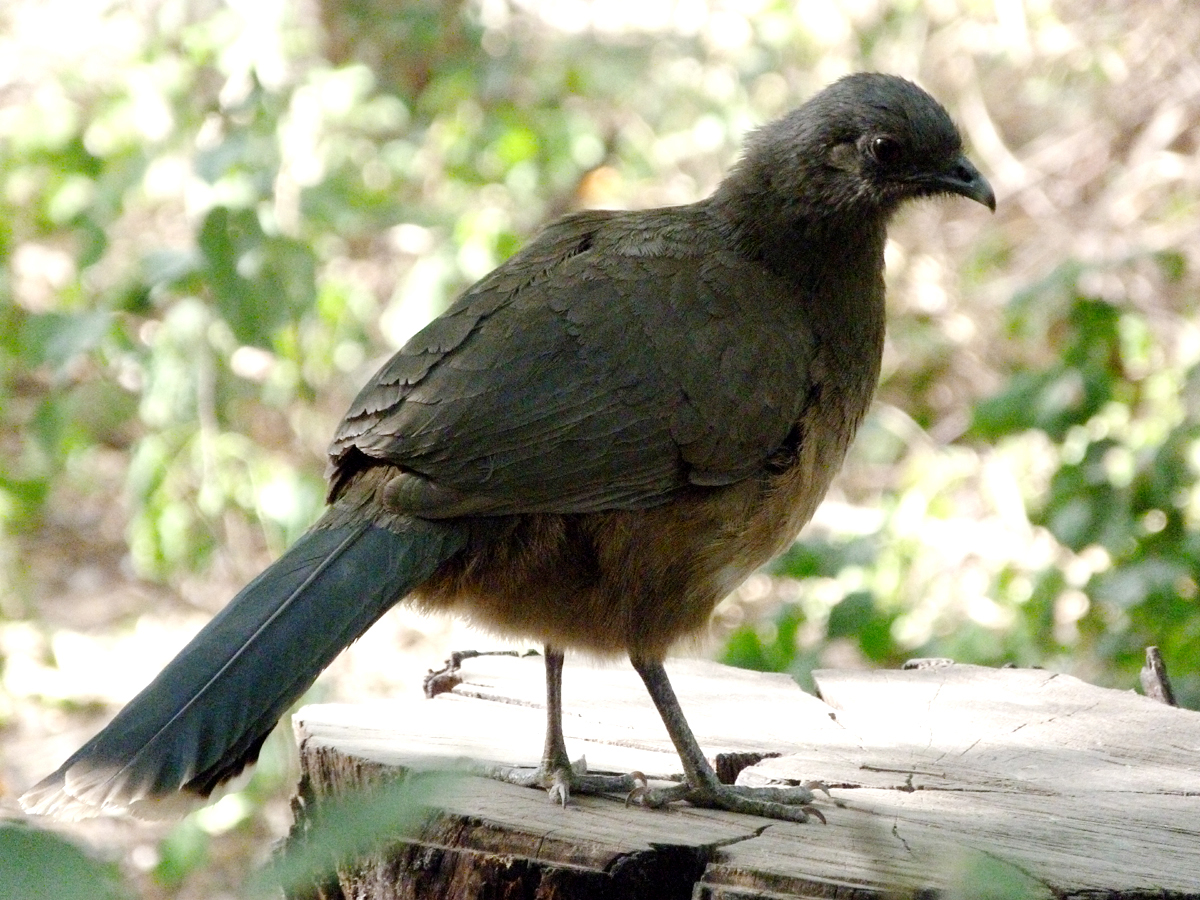Visiting with Big Mama
by Keith Hackland (alamoinn@aol.com)
photo credits: Keith Hackland
published May 2015


Creeping up behind a reclining bright green spring mesquite, I raised binoculars
and stared into the brown, scaly face of Big Mama, a huge alligator, reclined at
the edge of the pond. Its steely eyes appeared to be doing the math, estimating
my caloric value. Its stomach was rotund and its paws relaxed. Today it would
not chase me because it was full of waterfowl. Waterfowl are easier to catch than
humans. None-the-less, in my nervous state I imagined alligators discussing different
foods -- waterfowl, feathery and barely a mouthful; humans, soft on the
outside and crunchy on the inside, like a big candy bar, and quite satisfying.
It was one of those warm spring days and
I had heard rumors of alligators living in
Weslaco, at a pond on the lower edge of a
pasture, near the floodway. I had discovered
one, so it was true. I turned back and sauntered
across a waving grass plain, following
the tracks of trucks from the past, back
to the fence line and Old Blue, my battered
transport.
When I roamed its abandoned farmland
in 1998, who could have predicted the future
of this area?
Today it supports mesquite and retama
woodland, several extensive wading ponds
and duck ponds, an impressive shaded visitor
center deck with wide views, water,
grebes and coots at its feet. Due to enlightened
design and management, this land is
today a premier Texas birding site. It is visited
by thousands of birders and other nature
tourists weekly, Monday through Sunday.
Walking from the parking lot, folks are
impressed by the thoughtful plantings of native trees and bushes, and big bird's feet
leading the way to a path of large soft Mexican
brick. The path runs to a visitor center.
It leads folks through prime Valley butterfly
habitat. Native plumbago bushes with their
delicate white blooms line the path. Butterflies
flit ahead while others work nectar out
of flowers. Overhead mesquite, retama and
anacua shade the path. Brilliant red bougainvilla
blooms poke through the green
backdrop. Kiskadadee calls ring out above
and somewhere inside
the brush something
stirs. It is probably
a chachalaca.
Round a bend in
the path and ahead is
the magnificent visitor center, a deck spread
with great vistas, picnic tables, shade, and a
cooling southerly breeze loaded with scents
of water and blossoms, a welcome experience
on a warm day.
Estero Llano Grande State Park is
its official name. It is famous for great
birding every day of the year. It also attracts
those rare vagrants that bring
birders flying in from across the U.S.
This past fall and winter a Greycrowned
Yellowthroat was a co-operative
resident for many weeks.
Other habitat has been added to Estero.
There is the Tropical Area, where tropical
trees, bougainvilla, and bright bushes survive
from its former life as a residential mobile
home park. Then there is Camp Thicket, with bungalows for special events, reminding
us that it was once a Methodist church
camp. The Thicket has woodland that has
never been cleared, providing insight into
the Valley habitat one hundred and fifty
years ago, and providing a great protected
reservoir for nesting birds.
Estero offers many different habitats in
its 230 acres, resulting in its supporting
many different families of birds, and Estero
is small enough to comfortably walk
its length and breadth. One can see raptors,
flycatchers, waders, ducks, doves, and
migrants. Behind the visitor center there
are hummingbird feeders that attract great
hummers, and more native butterfly plants
popular with butterflies. Estero is well
known as the go-to place for spotting Common
Paraque, a night flyer that roosts in leaf
litter during the day, and forages for insects
at dusk and dawn. Walks lead by Estero's
knowledgeable and popular naturalists are
offered throughout the year, and are highly
recommended by visitors.
Oh, by the way, during Estero's development,
the original pond with its alligators
was enhanced,
and is a popular
destination in the
park, its resident
alligators happily
on site, with
posted warning signs to watch out for alligators,
especially Big Mama. This great
destination is aptly named Alligator Pond.









